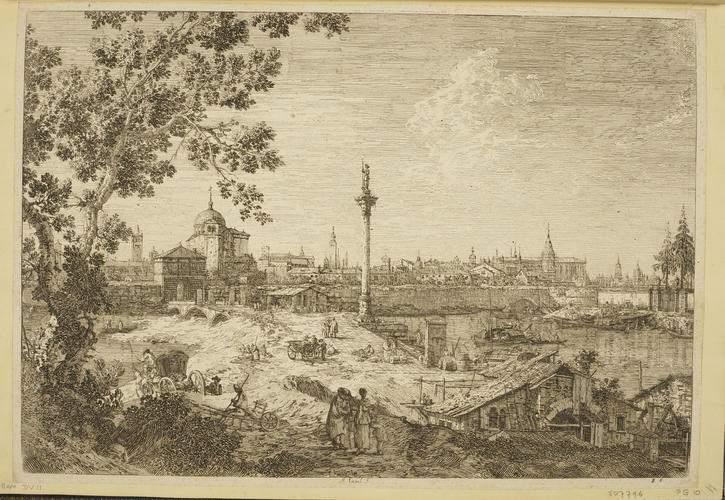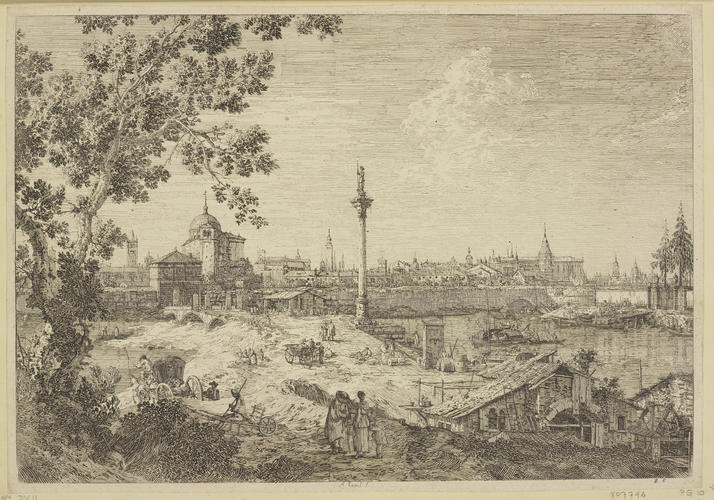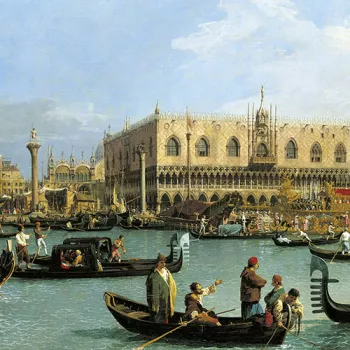A capriccio of Padua c. 1740 - c. 1741
Etching | 30.9 x 44.3 cm (sheet of paper) | RCIN 807796

Canaletto (Venice 1697-Venice 1768)
A capriccio of Padua c. 1740 - c. 1741


-
An etching of an invented view, known as a capriccio, of Padua in Italy. The churches and houses of Padua are in the distance, with the city walls in front. On the left is a three arched bridge which crosses the river and leads to the city gate. In front are figures and carriages approaching the city. In the centre is a column surmounted by a statue of a standing saint, probably St Michael. On the right is part of a river with various boats and barges. In the right foreground is a water mill and cottage. Inscribed at lower centre: A. Canal. f. At lower right: E 6. Third state, Bromberg no. 11.
Canaletto and his nephew Bernardo Bellotto began to experiment with etching in the early 1740s, an enterprise that has often been attributed to the decline in visitors to Venice and commissions following the War of Austrian Succession. Many of Canaletto's prints take their subject matter from the locks, sluice gates and summerhouses along the Brenta Canal towards Padua; others are entirely imaginary. Canaletto made just thirty-three etchings in total, etched on plates of two different sizes (about 30 x 42cm and 14 x 21cm), several prints include titles, but only one is dated, to 1741. Thirty-one of the prints were published together some time after 1744 as Vedute alle prese da i luoghi altre ideate (Views, some taken from nature, others imaginary). The titleplate is dedicated to ‘Signor Giuseppe Smith, Console di S. M. Britanico’, who was appointed to the position of Consul that year; the set was probably issued before the artist left for England in 1746. Smith possibly commissioned and financed Canaletto’s experiments. Many of the Canaletto etchings in the Print Room at Windsor are second and third states and were probably acquired in the twentieth century (see RCIN 807805). Identifiable by the traces of gold from the wash line borders with which they were once surrounded in Smith's Canaletto album, only a handful of prints definitely belonged to Smith, including several rare and unique impressions (see RCINs 807801, 807802, 807804).Provenance
Probably acquired c.1920-5
-
Creator(s)
-
Medium and techniques
Etching
Measurements
30.9 x 44.3 cm (sheet of paper)
29.8 x 42.7 cm (platemark)
Category
Object type(s)








